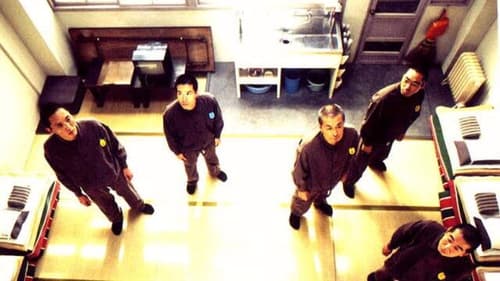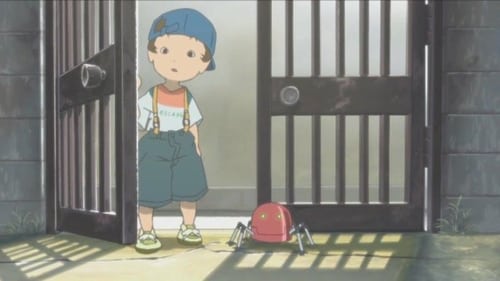Offline (2012)
Genre : Drama
Runtime : 1H 55M
Director : Peter Monsaert
Synopsis
A man attempts to reclaim the life that prison took from him but his dark past threatens to ruin everything.

A nostalgic envisionment of city living - the potential shards of memory seen as if always on the verge of cutting the mind to pieces.

An experimental short film of flashing images made by Stan Brakhage.

"'Mis-takes' give birth to 'shape' (which, in this work, is 'matter,' subject and otherwise) amidst a weave of thought: ... the 'dream' of Eden will speak for itself." The second part of the of The Weir-Falcon Saga trilogy.

July ’71 is as much a record of the daily experiences of light and shadow as it is a catalogue of domestic life. More involved with “straight photography” than Brakhage, but far more engaged with tactility and the plastics of the image than Jonas Mekas, this early work embraces the mundane—making bread in the kitchen, riding bikes by the San Francisco Bay, hanging out in a cheap-looking flat with friends, plucking a game fowl for supper—while also paying attention to the wind, water, and trees that surround these fleeting moments.

Rather than telling his parents, who have another girl picked out for him, Bob brings home his new wife disguised as his friend "Steve."

A send-up of Griffith's THE LONELY VILLA and other movies of that sort, such as THE GIRLS AND DADDY, THE LONEDALE OPERATOR and many others, as the heroine, thinking that burglars are trying to break into her home phones her husband at the office, who rushes home.... well, who tries to rush home in his chauffeur-driven automobile.

When Mario, a bad boy, is released from prison, he plans to live honestly with his wife Geneviève. But the latter has not waited for him and Mario, out of spite, accepts to work as a tout for Mr. Charlie, the boss of a white slave trade gang. His first assignment consists in seducing Michèle, a Montmartre nightclub singer and hostess, into signing a contract for Tangier. The young woman, however, who does this job only to support her young sister Danièle, falls for him and he for her. From then on Mario, without betraying himself, does his utmost to save Michèle -and Danièle for that matter - from the clutches of the gang...

No information available regarding the film's director. Just under 10 minutes of over an hour's footage survive.

Didier, 39, an unemployed artist, depressive and hypochondriac, is persuaded he is going to die within one or two months because of the asbestos contained in his radiator. That's why he decides, as a testament destined to his retired father, to have himself filmed in the places he and his parents used to go to for their Sunday escapades when he was a kid. But, after leaving Bastogne, he hears on the radio that Marc Dutroux, the pedophile-torturer-murderer has just escaped the police forces. Totally upset, Didier decides to fork off to Grâce-Hologne, a little village close to Liège, to protect a potential victim of Dutroux.

Based on the true story of the enduring but troubled love between Lois Wilson, co-founder of Al-Anon, and her alcoholic husband Bill Wilson, co-founder of Alcoholics Anonymous.

A man serving a sentence in a minimum-security prison. Life in the jail is rigid and organized, eventually leading all of the cell-mates to abandon their individuality.

In honor of the cat, so named, and the goddess of all cats which she was named after. - CAT Film Festival

A science fiction story about a young boy who discovers and befriends a small robot at a shopping arcade. The robot is hungry and he grows in size as he devours a number of machines of increasing size.

Ancient of Days is a remarkable series of "canons and fugues for video" that comprises Viola's most sophisticated structural and metaphorical explorations of time. Mathematical notations of precise time-code editing were applied to construct illustrations of temporal symmetry, duality and transposition — time-based equivalents of musical compositional principles such as counterpoint and serialism. Astonishing temporal interventions — a 180-degree pan gazing downward on a New York City street that progresses from day to night, an image of Mount Rainier in which the foreground and background unfold in different time planes — unfold as symbolic transformations of natural and urban landscapes.

This meditation takes its visual imperatives from the occasion of Mesa Verde.

A traveling salesman is lured by a precocious teenage girl to her shack in the desert for some sexual escapades. However, a scuzzy biker comes along and they both find themselves dominated and tormented by him.

The final Duplicity film does seem at resolve with the term. All previous visual manifestations have been extended to their limits, through four-roll superimpositions. Obvious costumes and masks. Drama as an ultimate bid for truth, and totemic recognition of human and animal life-on-earth dominate all the evasions a duplicity otherwise affords.

Short on funds, a Toronto slacker hatches a plot to scam the owner of a lost credit card.

“The Riddle of Lumen” presents an evenly paced sequence of images, which seem to follow an elusive logic. As in “Zorns Lemma” the viewer is called upon to recognize or invent a principle of association linking each shot with its predecessor. However, here the connection is nonverbal. A similarity, or an antithesis, of color, shape, saturation, movement, composition, or depth links one shot to another. A telling negative moment occurs in the film when we see a child studying a didactic reader in which simply represented objects are coupled with their monosyllabic names in alphabetical order. –P. Adams Sitney















